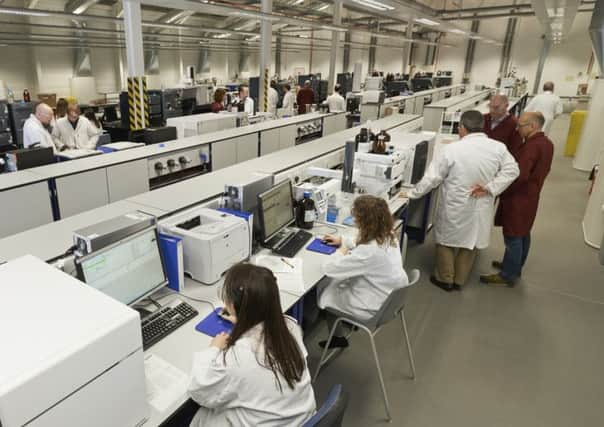Yorkshire scientists better equipped to face next food scare


Having played a key role in responding to the scandal involving horsemeat found in some beef products two years ago, the research team at Fera, the government’s Food and Environment Research Agency, has a new suite which allows a team of around 50 staff to utilise the latest ‘Mass Spectrometry’ technology.
The state-of-the-art facility officially opens at the end of this week and is the result of a £1.5 million investment.
Advertisement
Hide AdAdvertisement
Hide AdMass Spectrometry coupled with liquid chromatography is an analytical chemistry technique that helps scientists to unequivocally identify the amount and types of chemicals present in a food or animal feed sample.
This advanced measurement technique can be used to assess compliance against EU limits for chemicals, such as pesticides, veterinary medicines and mycotoxins in food.
It can also be used to obtain a full chemical profile or ‘fingerpint’ of the sample in question, a technique which is particularly important in studies of food fraud or food authenticity as test samples can then be compared against the profiles obtained from known authentic samples.
The system improves the capabilities of scientists at the Sand Hutton research base near York to identify both food safety and authenticity issues early.
Advertisement
Hide AdAdvertisement
Hide AdMatthew Sharman, head of science (food quality and safety) at Fera, told The Yorkshire Post: “This new suite has been six to nine months in the planning and building and with the new technology, it comprises of a multi-million pounds investment.
“Food testing is important, both from a national perspective and to the food industry to ensure that food is safe and is of the right quality and authenticity.
“To do these tests effectively we need to invest in technology that has been moving fast over the last few years, and we need to continue to invest so we have the capacity to respond to existing issues and new, emerging food scares as they arrive.
“What we are trying to do is two-fold: to ensure that food produced in the UK/EU and food that is imported from outside the EU meets legislation and legal limits for pesticides and other food contaminants; and, to predict what the next problems will be.”
Advertisement
Hide AdAdvertisement
Hide AdHe said the horsemeat scandal of January 2013 had been a wake up call to the scientific community as well as the food industry.
“It was recognised during and after that crisis that things needed to change,” Mr Sharman said.
“With this investment hopefully it puts us in a very good place to respond to future food scares quicker, but that depends of course on what samples that are presented to us for testing.”
The senior scientist explained that the Fera research team was now embarking on a project to run samples of existing food through its new technology in order to build up a significant bank of data.
Advertisement
Hide AdAdvertisement
Hide AdBy using advanced informatics to analysis ‘mass spec’ data obtained from different authentic foods, scientists will have a collection of ready made chemical profiles to compare suspicious samples against in the future.
The ‘mass spec’ suite at Fera is one of the largest facilities of its kind in the UK.